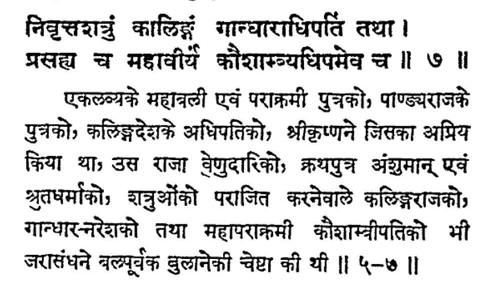Eklavya is another example that many people use to show how our culture discriminated against the lower classes in ancient times. But, before we leap to any conclusions, let us first understand who Eklavya was.
Eklavya’s Quest for Knowledge
Everyone remembers the story of a poor tribal kid who wished to study archery with Guru Dronacharya. When the renowned Guru refused to accept him as a student, the lad made a statue of the Guru and began learning by witnessing the great teacher in action and then practising under the statue he had created.
The Incident with the Wild Dog
When Eklavya was practising, a wild dog started barking, making it difficult for him to concentrate. Irritated by this, the kid launched multiple arrows into the dog’s mouth, blocking them without harming the dog.
When everyone at Drona’s academy saw the dog, they were astounded by the expertise employed to block his mouth and wanted to find out who this talented archer was. They discovered Eklavya practising nearby.
The great teacher asked Eklavya where he had learnt archery, and the boy replied that Drona was his teacher. Drona’s beloved student, Arjuna, stared at him with disappointment. Arjuna was unhappy because Drona had promised to make him the world’s best archer, but he appeared to be instructing someone else in secret.
Drona demonstrated his dedication to the Hastinapur throne by asking the youngster for his thumb in Guru-dakshina, restricting his potential as an archer.
This story is typically told about how a poor tribal child was denied an education due to his caste or origins. How was our culture during that period discriminatory?
But, before we associate the poor tribal kid image with Eklavya, have we tried to figure out who Eklavya was? Without this understanding, we may be misinterpreting the story.
The Truth about Eklavya’s Background
Eklavya is referenced only briefly in the epic Mahabharat. According to the Mahabharata narrative, Eklavya was the son of Nishad King Hiranya Dhanu. His name appears again during Yudhishthira’s Rajasuya Yajna, where Eklavya is mentioned as a guest.
So, even if we ignore all other sources except the Mahabharata, Eklavya was not an impoverished tribal child. Tribal, definitely, given that Nishads normally ruled the wilds, but poor kid, he was not. Hiranyadhanu was an ally of Jarasandha, who was an enemy of Hastinapur. According to the Mahabharata, Drona’s devotion to the enemy kingdom prevents him from accepting Eklavya as his student.
A Complex Portrait: Eklavya’s Allegiances and Actions
Now if we probe further and look into Harivamsa Purana, we would know that Eklavya was the biological son of Devashrava, a brother of Vasudev. This makes Eklavya Shrikrishna’s first cousin. Hiranya Dhanu, the Nishad King, adopted and raised him for unknown reasons. Eklavya attacked Mathura multiple times as part of Jarasandha’s army and later he even attacked Dwarka. During one such attack on Dwarka, he was killed at the hands of Shrikrishna.
Rethinking Eklavya’s Narrative
When you examine all of the facts provided about Eklavya in the Mahabharata and Harivamsha, you will discover that he was not a poor tribal lad who was discriminated against due to his social standing. What transpired between him and Drona may seem improper, but the cause was not social discrimination, but something else. It was primarily due to Drona’s loyalty to Hastinapur.
Eklavya was neither poor – he was commander in the Army of Jarasandha and the son of Nishadh king Hiranyadhanu – nor young – his son was in attendance during Rukmini’s swayamvar, implying that he was significantly older than the depictions we have seen – nor an example of social discrimination – he was one of the esteemed guests present during Yudhishthira’s Rajasuya yagna.
Eklavya’s story challenges simplistic notions of social discrimination, revealing a complex narrative rooted in alliances, conflicts, and personal choices, transcending labels of victimhood.




